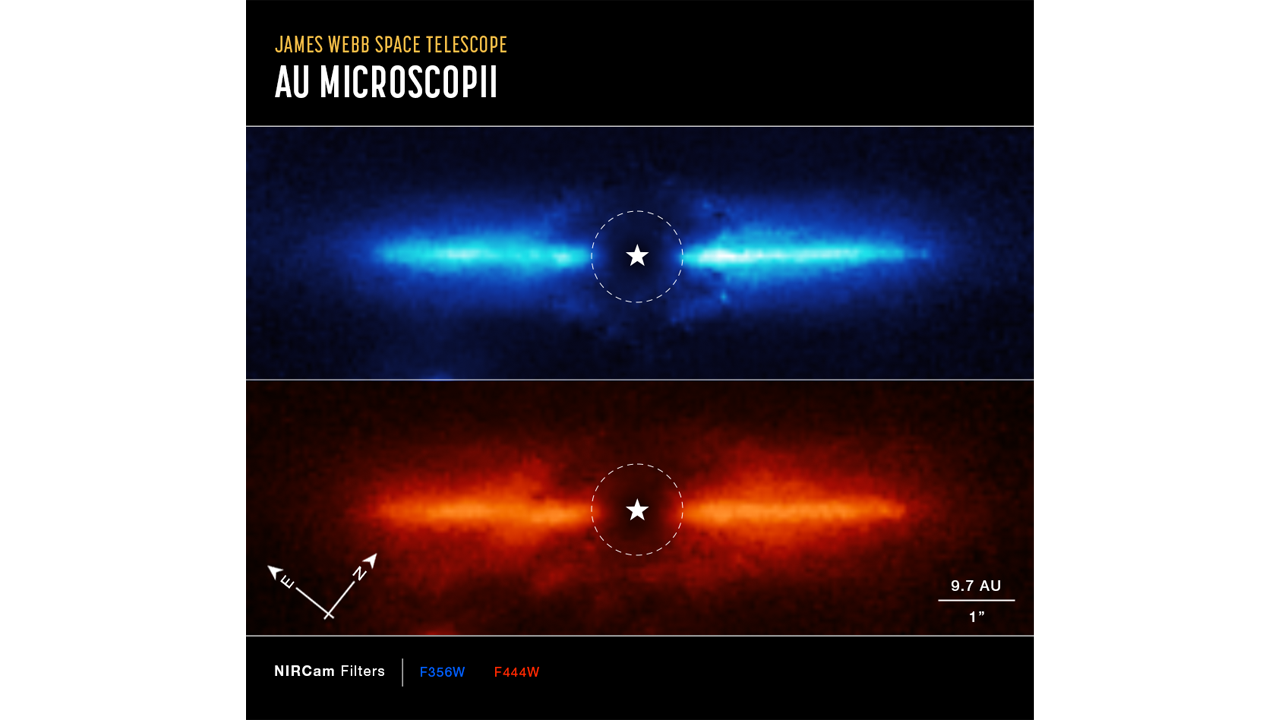About
I am an assistant research scientist working at NASA Goddard Space Flight Center (through a CRESST-II appointment at the University of Maryland, Baltimore County). I study exoplanetary systems through high-contrast imaging, with a particular focus on data post-processing methods and the planetary systems of low mass stars. Currently, my time is split between two research projects.
In the first project, I’m working with high-contrast imaging data from JWST. This includes further development of Winnie, a Python package for post-processing and analysis of circumstellar disk systems that I created during my time as a NASA Postdoctoral Program fellow. As part of this project, I will also be working with observations from a JWST Cycle 4 program that I led (GO 8826), which will observe a sample of 22 very nearby young M dwarfs to search for exoplanets and debris disks.
Deconvolution of simulated JWST NIRCam coronagraphic observations of the AB Aurigae protoplanetary disk system using Winnie. NIRCam’s shaped pupil produces a complicated blurring pattern that otherwise all but precludes detailed study of disk structure. Winnie’s deconvolution procedure corrects for this blurring to make such studies possible.

Press release images of the AU Microscopii debris disk at 3.6 and 4.4 microns as observed by JWST/NIRCam (reported in Lawson et al. 2023).
In the second project, I am developing a framework to enable the discovery of exoplanets and debris disks in planned survey observations from the Roman Space Telescope’s Wide Field Instrument (WFI). The significantly undersampled PSF (FWHM ~ 1.2 pix at 1.6 microns) makes this task especially challenging from the perspective of conventional post-processing methods, as any sub-pixel interpolations (e.g., to align stellar PSFs for subtraction) will lead to image artifacts that prohibit high-contrast sensitivity. However, fundamentally, these data should be capable of high-contrast performance comparable to HST’s NICMOS (or better). While NICMOS was limited to observing a single star at a time (~400 stars total), WFI’s High Latitude Wide Area Survey (HLWAS) will observe ~40000 stars within 100 pc (and many millions of stars at larger distances). While these data will require novel post-processing methods, such efforts are well-motivated by the unbelievably massive scale of the sample.
Before coming to Goddard, I worked with observations from the Subaru Telescope’s SCExAO/CHARIS instrument. As part of this work, I created the spectropolarimetry data reduction pipeline and also developed post-processing algorithms to enable discoveries like AB Aurigae b, a candidate disk-embedded protoplanet.
